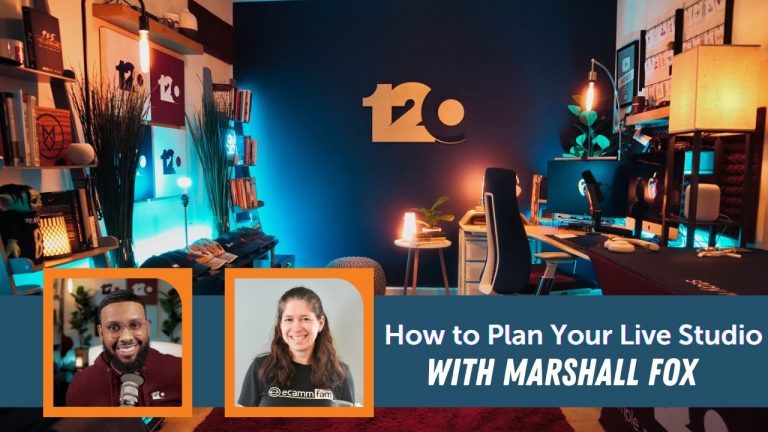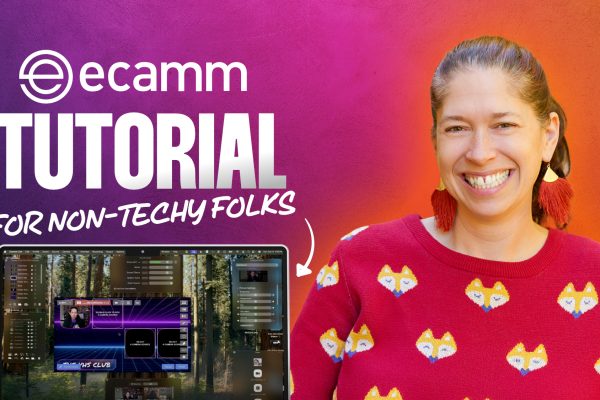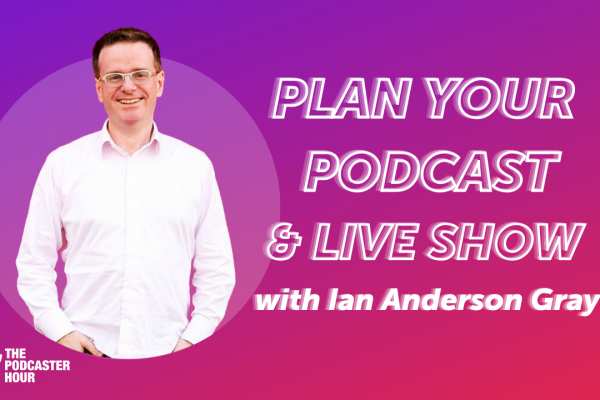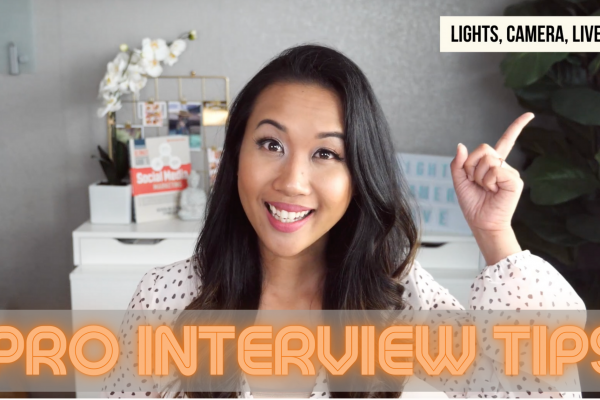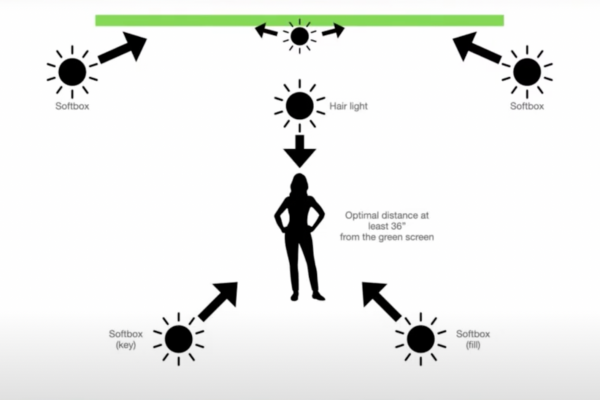Planning out your home studio and office space is an incredibly important part of being successful when you’re working from home. It’s also challenging. What gear and tools do you need? When is it time to upgrade? How can you make things cozy, while also being convenient and purposeful?
In this interview with Marshall Fox, we’re breaking down how to design the perfect home studio for you.
Watch the full interview with Marshall and Katie
Check out Marshall Fox’s Cozy Vibes Home Office Tour
Why don’t you give us a bit of background on who is Marshall Fox and what do you do?
So I’m Marshall Fox and I’m a graphic designer. My company is called 120 Design Studio. We serve authors, speakers, coaches, and consultants. I help them show up online, like they show up on stage. I’ve been doing that for about four and a half years and I have about 500 clients right now. It’s been an amazing journey… just entrepreneurship in general. It’s had its ups and downs, but I’ve learned a lot and I’ve really expanded my network.
I’ve also been able to have tremendous impact or help my clients have tremendous impact. And now I’m shifting into a season where I’m trying to have impact for myself. So one of my main goals right now is to put other freelance designers on game, give them tips, tools, strategies that I’ve been able to apply to my business so they can apply it to their business and have success.
When I first got into design, I didn’t really see what success could really look like for me as a graphic designer. I didn’t go to school for it. I looked up the average salary of a graphic design and was like “I can’t support my family with that.” But I went forward and things kind of blew up.
My main mission with my channel is to show what success looks like in the graphic design space for freelance designers and give them those tips, tools, and strategies that they can apply to their business. My newest video on YouTube is my office studio tour and it’s performing really well right now because I think it gives people helpful information on how to approach planning out your home studio space along with what gear and tools I use and find helpful.
How long have you had your studio space? And how did you approach initially setting up your live studio?
My space started with my favorite colors, maroon and navy. They also happen to be the brand colors for my business, 120 Design Studio.
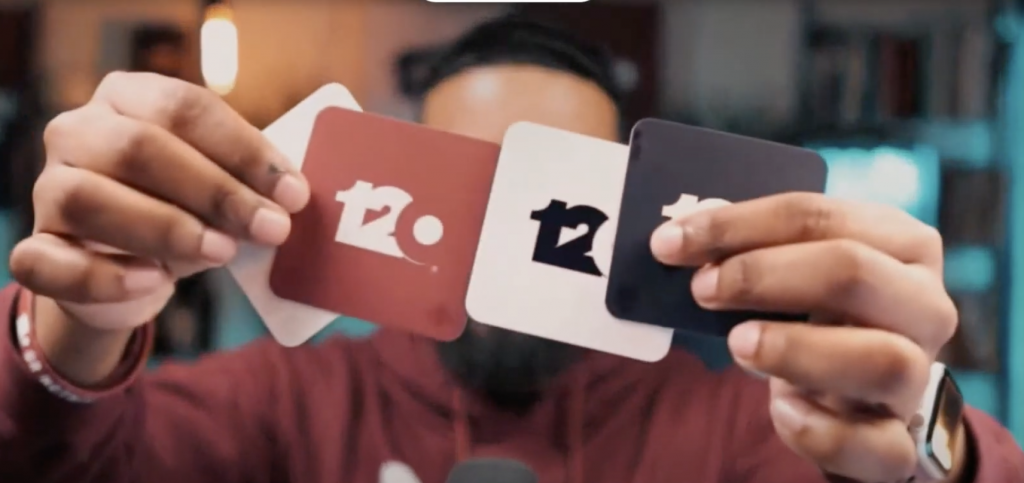
So when I did the logo for my company, I came up with a few different color schemes. And I was like… what if I had four canvases with this color scheme and put them up on my wall? So that’s where my set background started. I put my logo up on canvases on my wall in a grid.
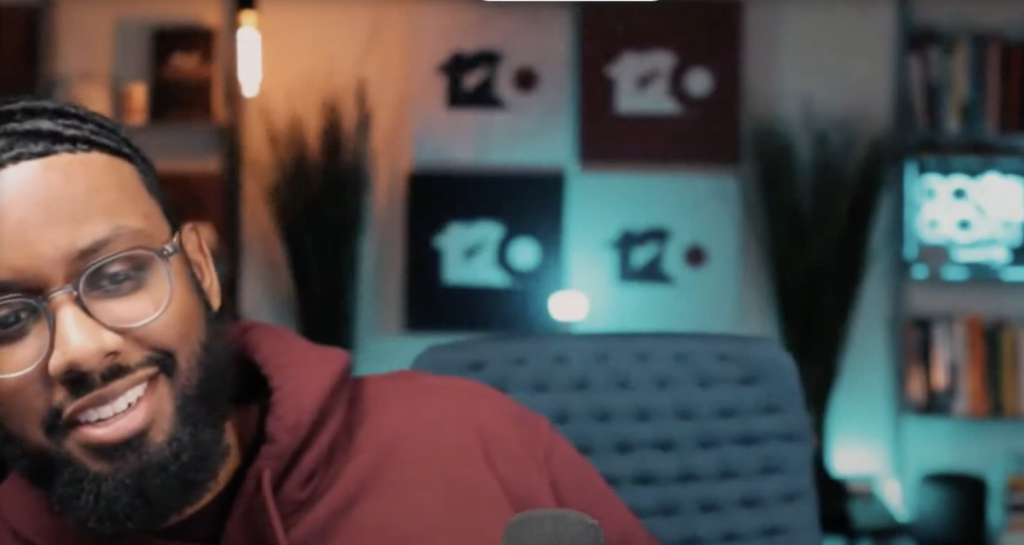
And I said, okay, what if I put two bookshelves on the side? What if I had like a little console table below? It really started from the color scheme and the four different color schemes and everything kind of evolved from there.
The core elements of my studio space are my bookshelves, the four canvases, and an accent wall with a lit sign that a colleague made for me. I also my have my desk with my Mac computer.
When Ecamm Live reached out and asked me to work with them on some tutorial videos on how to light your live stream, what microphones are best for live streaming, and what are LUTS, I started to get really intentional with the vibe of my space.
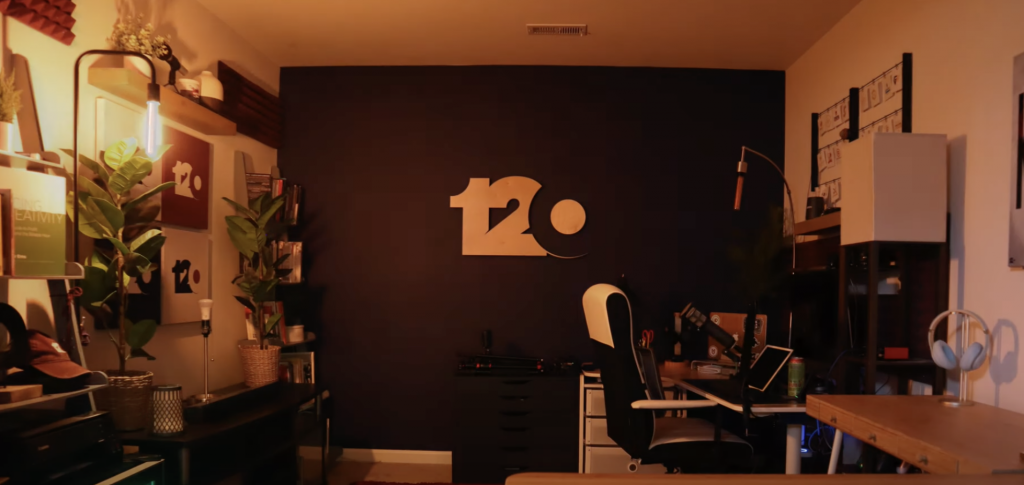
It started with the small touches – the fake plants, the lighting, a little glow bag here, just the whole ambiance…
I wanted to create an experience. I wanted to bring people into my space and make them feel comfortable because all of this stuff you see here…it’s for the viewer more than it is for me. That’s when my space evolved from being a home office into a studio set.
I think that’s incredibly important because when most of us are thinking about a studio, we’re thinking about the gear. And what you’re saying is that you started with the vibe. You thought first about your brand and the feeling that your videos would evoke.
Yes, I think it’s important to think through what are the things that bring you or your brand to life. You know – the little knick-knacks and things in your space that give it life.
Okay, let’s talk about lighting. Do you have windows in this space? How are you thinking and approaching lighting for your videos?
Lighting is super important. It brings the coziness and warmth into your space and can really evoke a feeling.
I don’t have any windows in this space, which is kind of a bonus since it allows me to control the light better since I’m streaming at all different times of the day. It means that I don’t have to contend with external light sources.
I always keep the main light off because that allows me to be international about the lighting that I have. So I have lights that light myself and then accent lighting throughout the space. I use light strips and they’re connected into an entire ecosystem of lights, so I can control them with my Amazon Alexa. You don’t need the expensive ones that I have. You can just search for Alexa lights or light strips. A pro tip is that you should never have the lights right up against the wall and you don’t want the little LEDs showing.
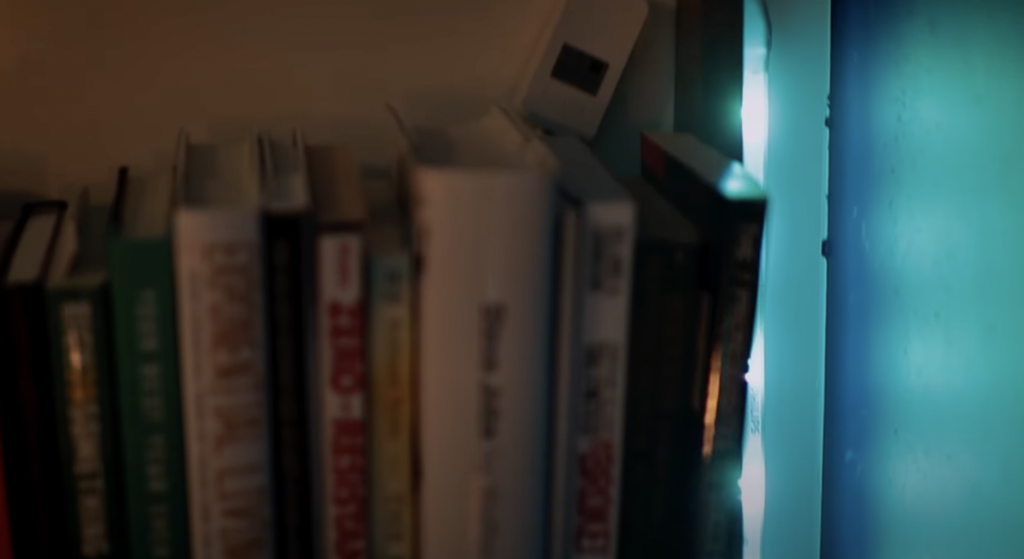
Also, if you’re going to connect in a series of light strips, make sure that you find ones that all compatible with each other so you can connect them and control them with one source.
In addition to the lights on me and the light strips, I have some lamps in the space with Edison bulbs. These add character and warmth to the space.
What about your camera? What camera are you using to create the videos you do?
I use the Canon M50 Mark II camera with a CamLink 4K to connect it into my Mac and into Ecamm Live. I try to shoot most videos set to 1080 on the camera, but 4K in Ecamm Live because my internet speed is really fast. I’m really just looking for the highest quality I can get.
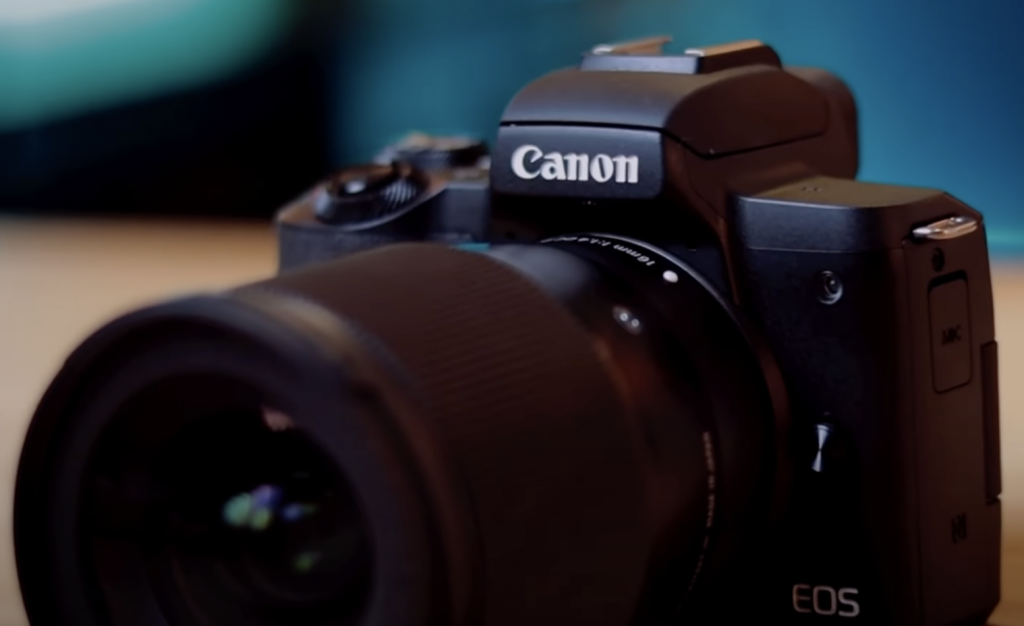
So if I would’ve known that upfront, then I’d likely when I spend all that money on it. Yeah. Yeah. That’s important to know for sure. Um, it looks like James is asking for your camera and your Ecamm set up for video. Are you, are you typically shooting at 10 80 or 4k? Uh, so out of the camera is 10 80 when I’m streaming, but in Ecamm I’ll set, it’s a 4k just because my internet speed is really fast.
Also, I’m using a Sigma 16mm F1.4 lens, which gives me that blurred background effect that I love. It’s sometimes called a bokeh effect. It’s worth noting that I’m 21 inches away from my camera and 7 feet away from the back wall. This helps give depth to my shot as well.
What about sound absorption? Do you have any kind of specific pre-made panels?
Yes, I use acoustic foam panels. They’re 12×12 acoustic foam panels from Foam Factory.
I did a lot of research before I purchased them and I really liked the Foam Factory because they have all different kinds of foam and they were relatively inexpensive. I think I spent about $85 for everything I got.
I have four sections of four panels each up on the ceiling. And then I have a few behind me. Honestly, I don’t know if it’s a huge improvement, but they look good and add to the aesthetic of my space and the soundproofing in here is pretty good anyway. I don’t get much of an echo. I think it depends on your space and how much echo you have in your particular room.
I think that really thinking through what the size of your space is, how much natural light you have, whether or not your room has an echo… all of these are important factors to consider in your planning. Start with a blank slate as much as you’re able and go from there. Layer on all the personality and different elements that you need.
What was the first piece of gear that you ever purchased?
The first piece of gear I got was this ATR – Audio Technica microphone. It’s the ATR 2100. It was probably about $60. I don’t think that they sell this specific one anymore, but this is a phenomenal microphone. Even when I go back and watch old videos, it sounds great.
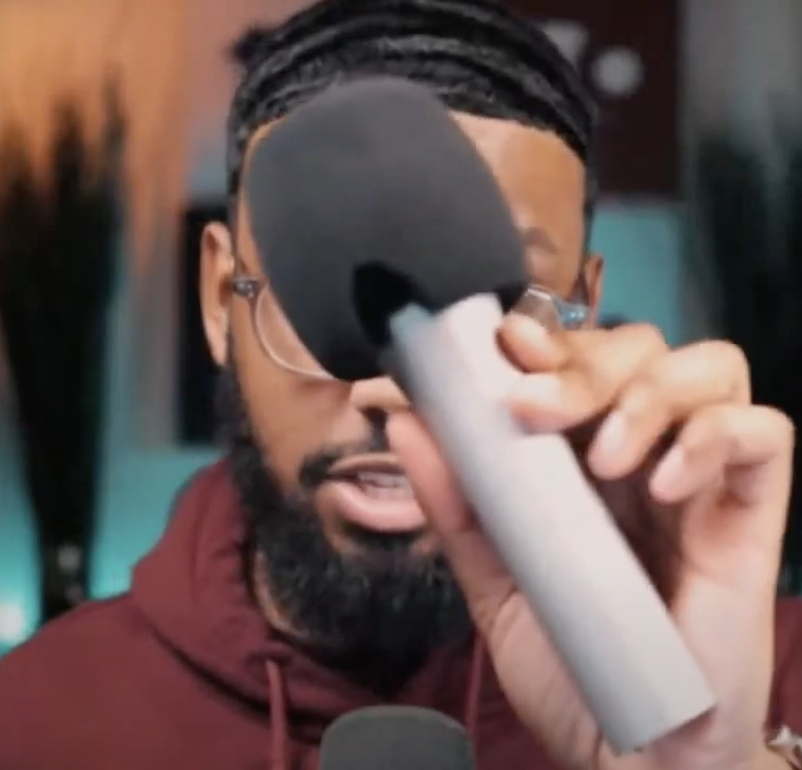
My kids took a piece out of the phone. It’s ATR 2100. Um, great microphone. It’s probably, it was probably about 60 bucks. I don’t think they sell this specific one. I think they sell it at 2100 X right now and it’s all black, but this is a phenomenal microphone, even when I go back and watch old videos, which I recently did.
So this was the first piece of gear that I got even before I got a camera. Honestly, the microphone is the most important thing you can have because people will put up with bad video quality, but they will absolutely turn off your content if they can’t hear you well.
How do you go about upgrading your gear or adding new pieces in? How do you think about what you might need and what kind of research you need to do in order to get the right piece for your space?
Well, the most important thing is to focus on your content first. Focus on adding value. We tend to overcompensate with these setups, right? We end up with what I call “GAS” or gear acquisition syndrome.
It can be expensive and it can be unnecessary to be honest. So you don’t want to get caught in the trap of that. Upgrades are always going to be something new, always going to be something that you want.
I’m at a point where it’s like, okay, I got literally every single thing that I want and I honestly could have gotten the job done a lot more inexpensively, right? So when it comes to upgrading, I would suggest making a list of the basics and start there. You need a good computer, a camera, a microphone, and lighting. Lighting is very important.
Honestly, you could have a webcam and make that sucker look amazing with good lighting. So as your business grows and revenue starts to roll in, then go ahead and start to slowly upgrade based off of what you may need.
But I’m just saying… as somebody who’s kind of done everything, a lot of it is unnecessary.
People may come for the look, but they’re going to stay for the content.
Yeah, absolutely. I think if you’re focused on helping people and delivering value, you’re always going to win.
Even if something horrible happens and your camera goes out and you’re just talking, you know, it is amazing that people will stay. If you’re delivering something that is bringing them value and helping them, then they’ll stay even when the quality gets bad. Upgrade your skills first.
And don’t forget about the visual branding.
We all have a brand. It’s the brand that is your digital reputation. It’s your uniqueness, it’s your vibe.
Remember that with live video, you’re inviting them into your space, right? So it’s more for them. All of this is more for your viewers than it is really for you. So you kind of have to find that balance between your own personal tastes preferences and what may be appealing to the people you’re trying to reach. And this is something that I kind of tell my clients when we do like brand strategy sessions and things of that nature.
When it comes to the actual visual branding, your client, your potential customer in their preferences is more important than your own personal tastes. Right? So as content creators, we need to find that balance. So I was like, yeah, these are my preferences, but what will my viewers like? What will be appealing to them?

